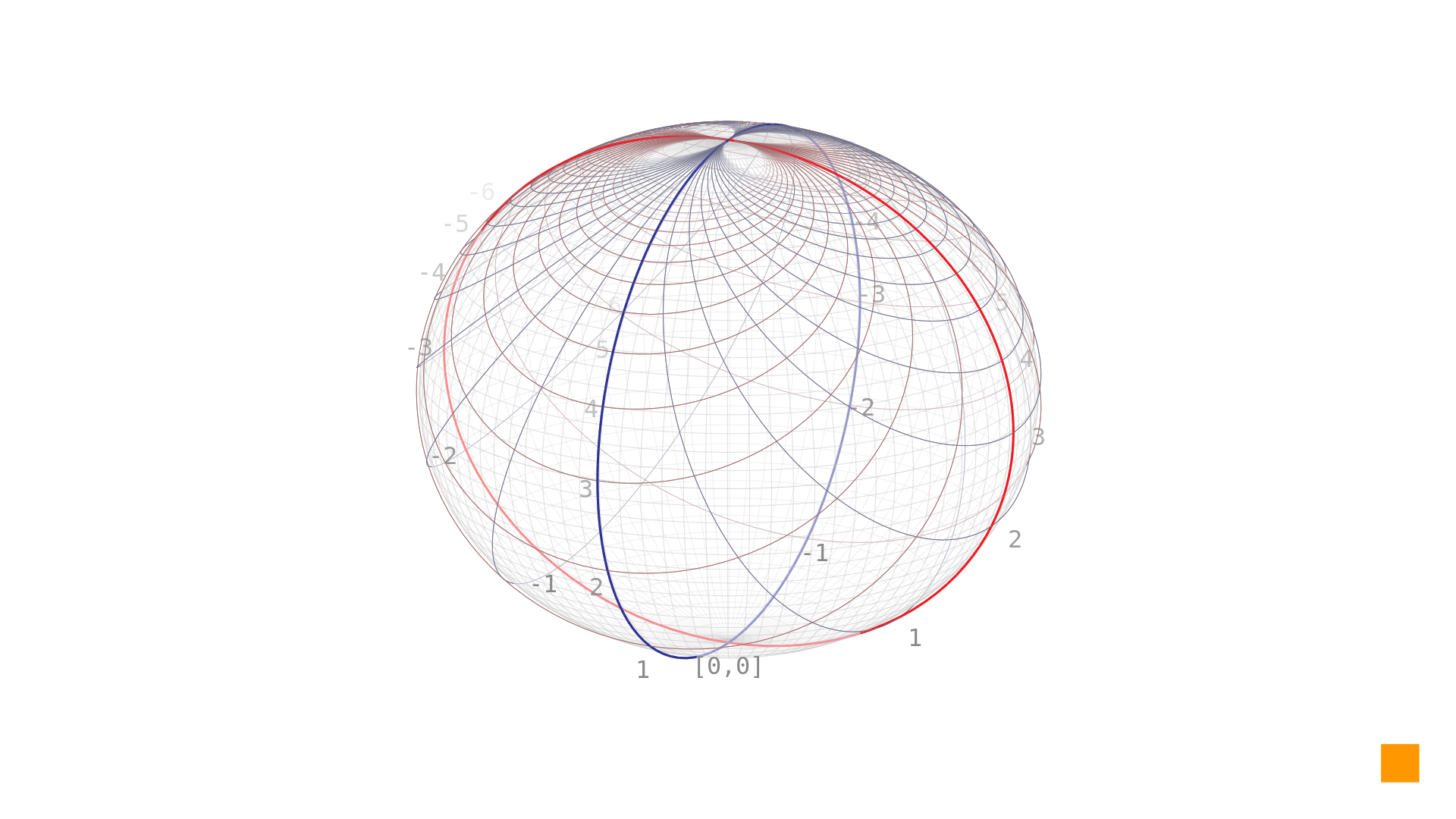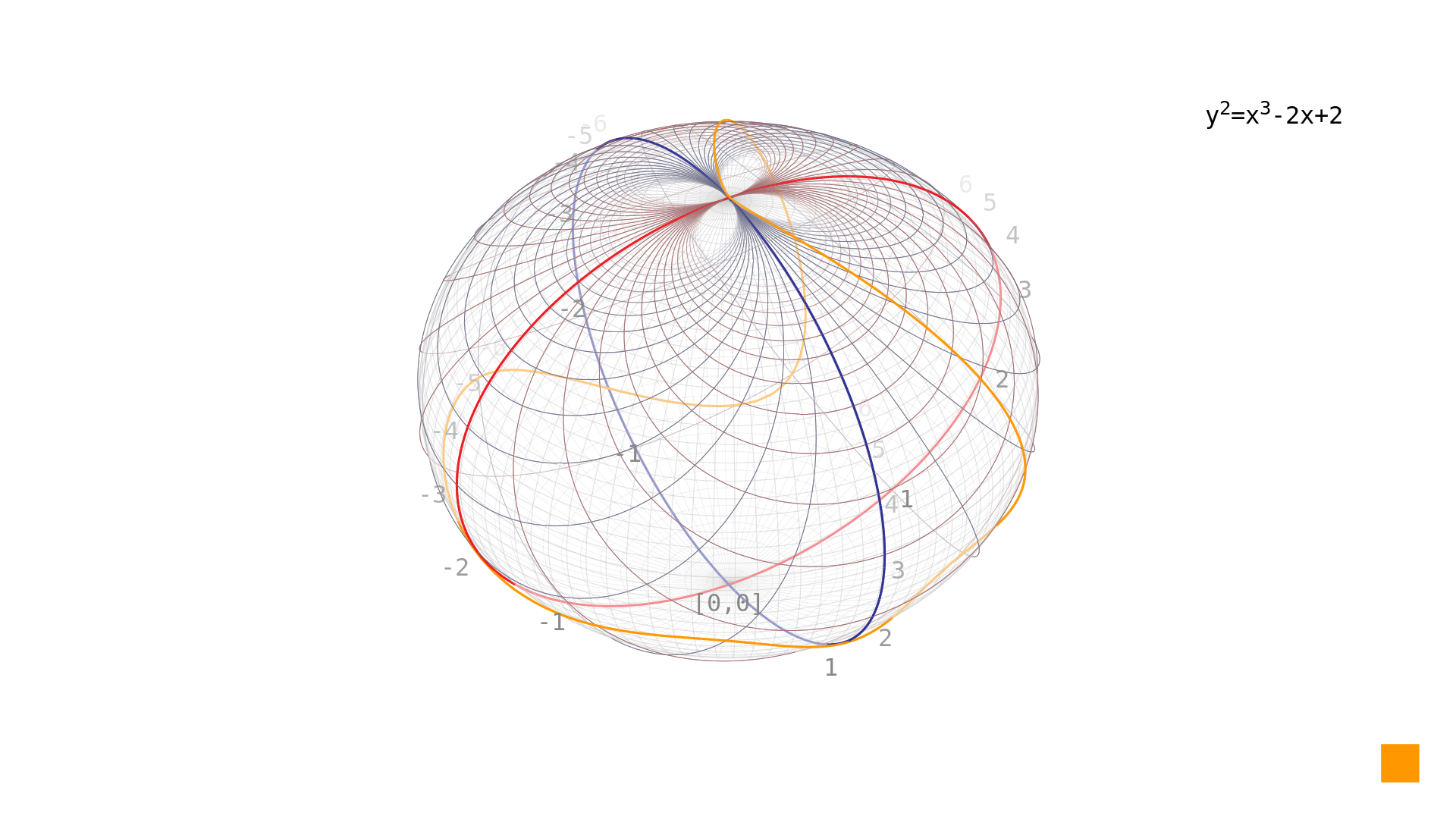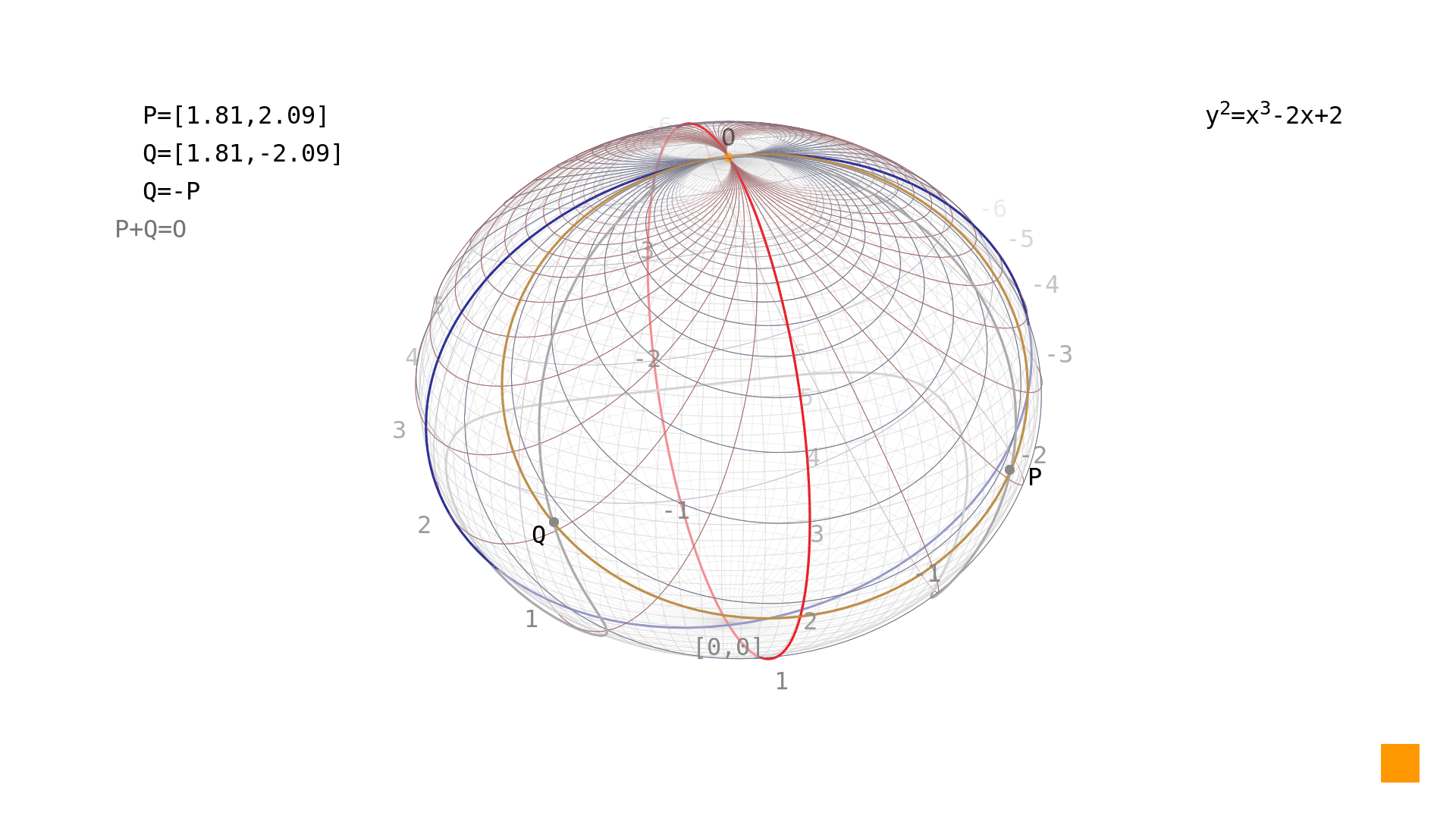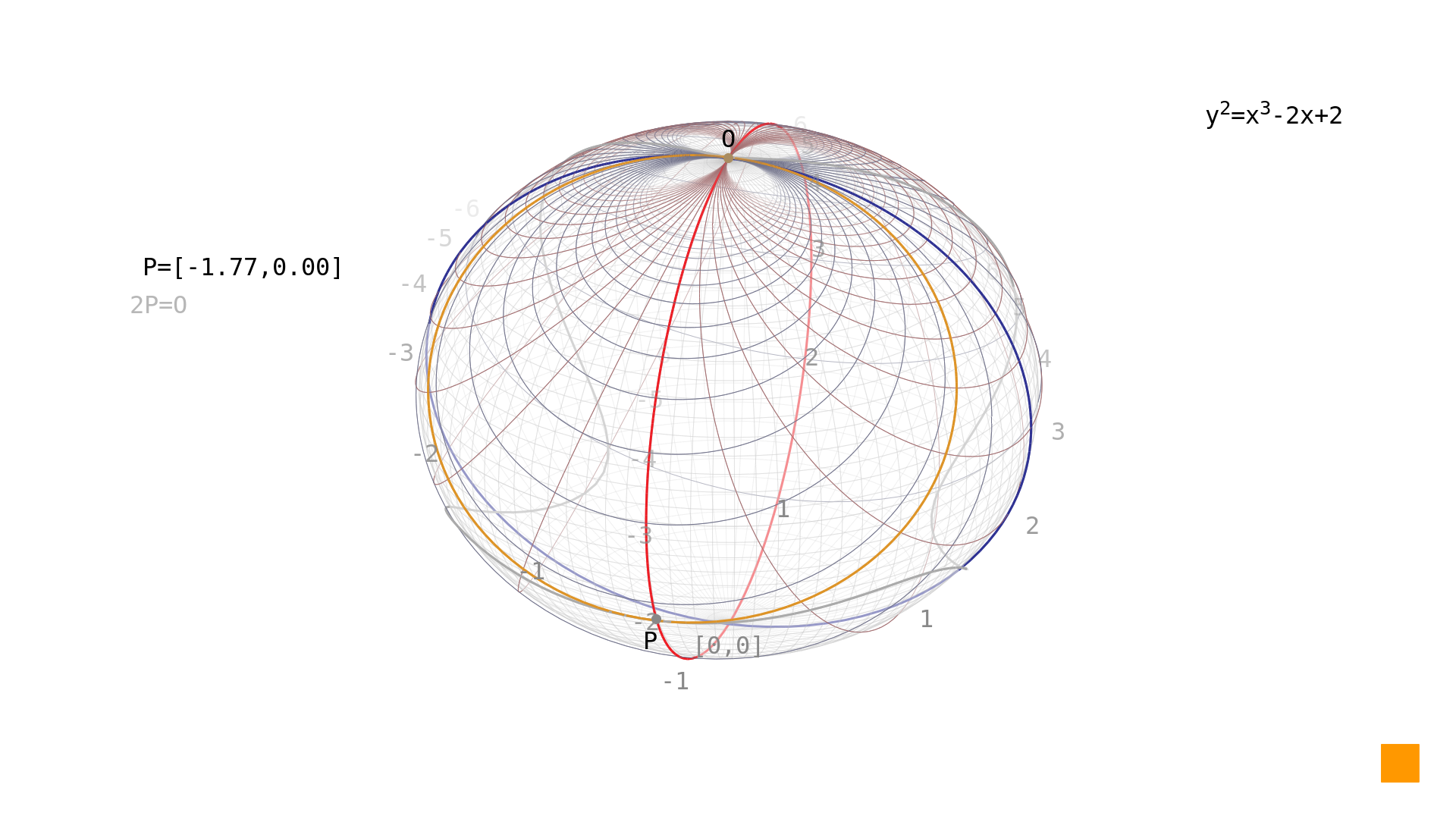Elliptic curves: point at infinity revisited
Written by Dominik Joe Pantůček on 2018-04-05
curvesinfinitycryptographyLast week, we have talked about certain situations where the operation performed with points of the elliptic curve does not produce a result which is a valid point of the elliptic curve over real numbers. In this article we present a different approach to explaining the point at infinity using visualizations of the projective plane. Once you can see it, you will find it rather easy to understand.
The infinite two-dimensional plane of pairs of real numbers has an inherent problem of just not fitting onto the small screens of our computers. No matter how high the resolution will be, you cannot draw an infinite image on a finite screen. However, if you can take the liberty to relax the visualization requirements - for example that not all unit distances have to be of the same size - you can easily fit an infinite plane into a bounded area. For fitting the two-dimensional infinite plane info a finite image, we use the projective plane[1] = basically mapping of the infinite plane onto a sphere[2]. Typically a unit sphere is used and appropriate coordinate transformation is: In order to better visualize the immediate vicinity of the origin of the coordinate system, we take the liberty and for all our visualizations we do another transformation before projection and divide each coordinate by the factor of 3: And this is how we fit the infinite two-dimensional plane onto rather finite sphere as seen in Picture 1. You can see that both and lines cross the equator of the sphere at their most southern points.

Picture 1:The projective plane depicted using the stereographic projection. Drawing the elliptic curve onto the surface of the sphere can be seen in Picture 2 which depicts the fact, that the elliptic curve forms a closed curve in the projective plane.

Picture 2: Elliptic curve in simple Weierstrass form shown on a sphere representing the projective plane. Looking at addition of two points of the elliptic curve in the projective plane shows that in this view, the problem with line not crossing another point on the elliptic curve disappears. As can be seen i Picture 2, the infinite line forms a closed circle in the projective plane and crosses the elliptic curve in the point at infinity.

Picture 3: Addition of two points and on elliptic curve in simple Weierstrass form where depicted on a sphere representing the projective plane. Doubling a point at which the tangent line is equidistant to the Y axis produces similar result when working in the projective plane as seen in Picture 4.

Picture 4: Doubling of a points elliptic curve in simple Weierstrass form where depicted on a sphere representing the projective plane. As always, understanding the geometric meaning of point addition and doubling points of the elliptic curve in simple Weierstrass form in the projective plane is easiest by watching Video 1 which depicts everything in motion.
Video 1: Walk-through of point addition and doubling on the elliptic curve in simple Weierstrass form depicted on a sphere representing the projective plane. As we can see, the point at infinity can truly be a real point - and although (when working over other fields than pairs of real numbers in the projective plane) we use it only as a concept, it is nice to be able to track the origin of such concept.
I hope everyone enjoyed our extended ride to infinity and maybe it will inspire someone to study non-euclidean geometries in more detail. Next week we will take a huge step in our quest into explaining the cryptography behind how we plan to secure online communication and rest assured, there is some interesting stuff coming. See ya next Thursday!
References
-
Wikipedia contributors. (2018, March 8). Projective plane. In Wikipedia, The Free Encyclopedia. Retrieved 18:39, April 3, 2018, from https://en.wikipedia.org/w/index.php?title=Projective_plane&oldid=829438076
-
Wikipedia contributors. (2018, March 15). Stereographic projection. In Wikipedia, The Free Encyclopedia. Retrieved 18:40, April 3, 2018, from https://en.wikipedia.org/w/index.php?title=Stereographic_projection&oldid=830548015
